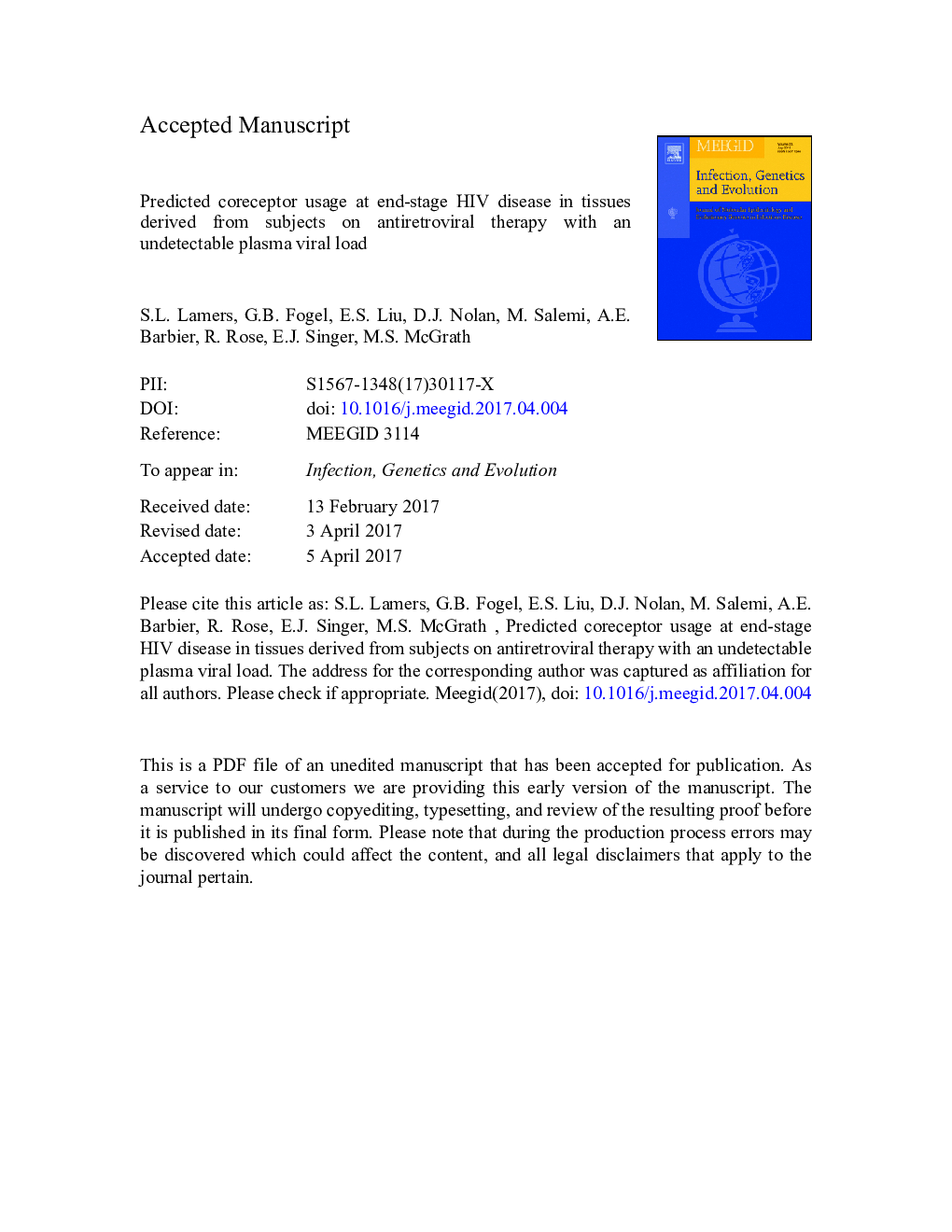| Article ID | Journal | Published Year | Pages | File Type |
|---|---|---|---|---|
| 5590453 | Infection, Genetics and Evolution | 2017 | 15 Pages |
Abstract
HIV cure research is increasingly focused on anatomical tissues as sites for residual HIV replication during combined antiretroviral therapy (cART). Tissue-based HIV could contribute to low-level immune activation and viral rebound over the course of infection and could also influence the development of diseases, such as atherosclerosis, neurological disorders and cancers. cART-treated subjects have a decreased and irregular presence of HIV among tissues, which has resulted in a paucity of actual evidence concerning how or if HIV persists, replicates and evolves in various anatomical sites during therapy. In this study, we pooled 1806 HIV envelope V3 loop sequences from twenty-six tissue types (seventy-one total tissues) of six pre-cART subjects, four subjects with an unknown cART history who died with profound AIDS, and five subjects who died while on cART with an undetectable plasma viral load. A computational approach was used to assess sequences for their ability to utilize specific cellular coreceptors (R5, R5 and X4, or X4). We found that autopsied tissues obtained from virally suppressed cARTÂ + subjects harbored both integrated and expressed viruses with similar coreceptor usage profiles to subjects with no or ineffective cART therapy (i.e., significant plasma viral load at death). The study suggests that tissue microenvironments provide a sanctuary for the continued evolution of HIV despite cART.
Related Topics
Life Sciences
Agricultural and Biological Sciences
Ecology, Evolution, Behavior and Systematics
Authors
S.L. Lamers, G.B. Fogel, E.S. Liu, D.J. Nolan, M. Salemi, A.E. Barbier, R. Rose, E.J. Singer, M.S. McGrath,
